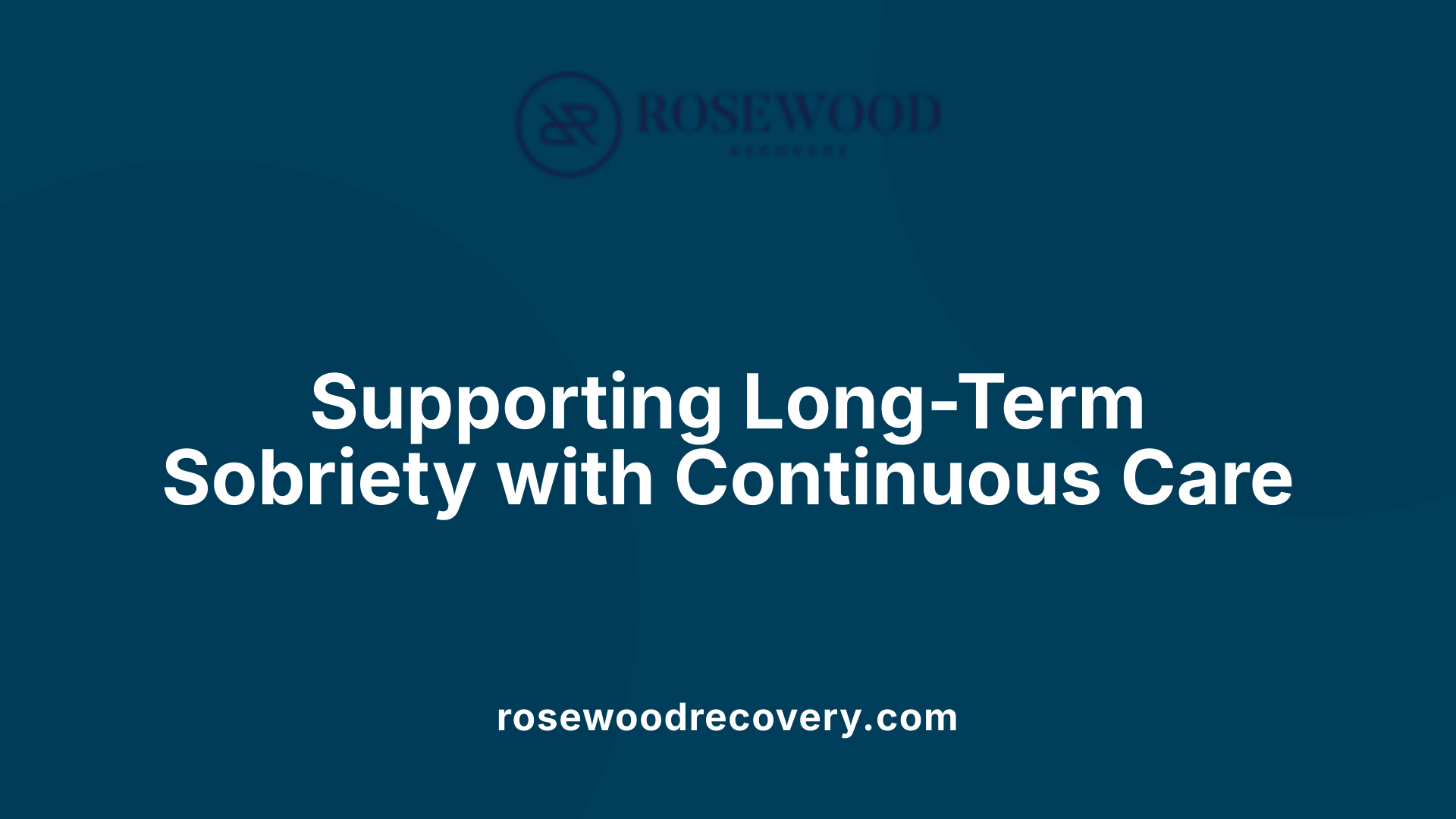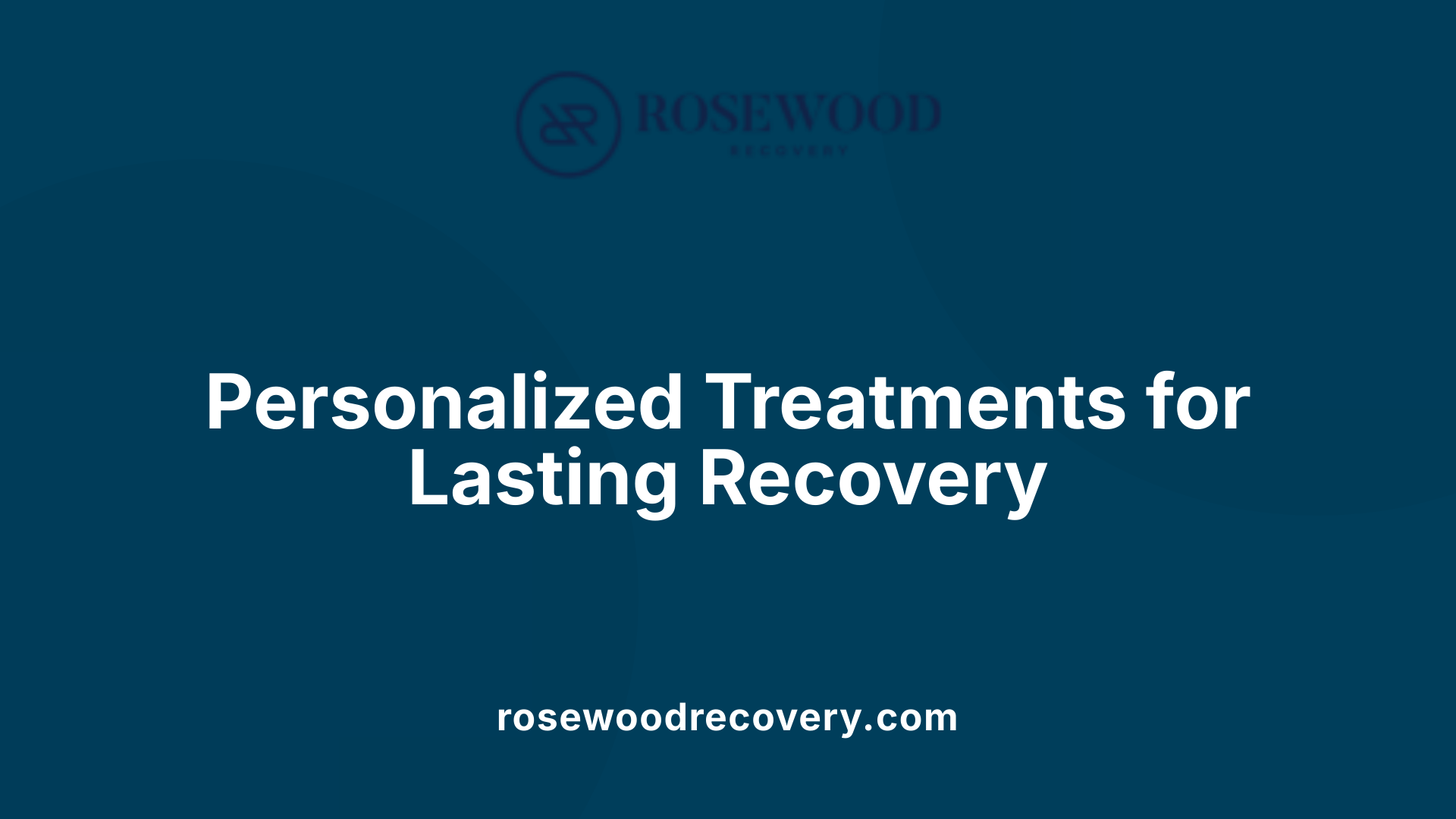Stages of outpatient addiction treatment explained
Understanding the Pathways in Outpatient Addiction Recovery

Navigating the Complex Journey of Addiction Treatment
Addiction treatment is a multi-layered process designed to support individuals at various stages of recovery. Outpatient addiction treatment offers flexible and effective care that can be tailored to an individual's unique needs, particularly through a continuum of services allowing step-up and step-down transitions. This article explores the stages of outpatient addiction treatment, their goals, and how these fit into the broader context of comprehensive addiction and mental health care.
The Continuum of Care: Foundations of Addiction Treatment Levels

What is the continuum of care in addiction treatment?
The continuum of care in addiction treatment is a structured framework providing multiple levels of services tailored to meet the varying needs of individuals struggling with substance use and related disorders. This model allows clients to enter treatment at the level best suited for their condition and progress by stepping up or down through different intensities of care, based on their recovery progress and individual needs. It supports a holistic and flexible approach, aiming to address not only the addiction but also associated mental health and social challenges.
What are the American Society of Addiction Medicine (ASAM) levels?
The American Society of Addiction Medicine (ASAM) defines five primary levels of care within the continuum:
| ASAM Level | Description | Typical Services & Duration |
|---|---|---|
| Level 0.5 | Early Intervention | Education and preventive resources for at-risk individuals |
| Level 1 | Outpatient Services | Weekly therapy sessions, relapse prevention, less intensive |
| Level 2 | Intensive Outpatient/Partial Hospitalization (IOT) | Structured treatment averaging 9 hours/week, flexible schedule |
| Level 3 | Residential/Inpatient Services | 24-hour care in facility, therapeutic support, lasts 30-90 days |
| Level 4 | Medically Managed Intensive Inpatient Services | Intensive medical and clinical supervision during withdrawal or severe symptoms |
This system facilitates smooth transitions between levels, matching patients’ severity of addiction and clinical needs.
How does flexibility in patient transitions support recovery?
Flexibility is fundamental to the continuum of care. Patients can enter treatment at different levels depending on their assessment and step up to more intensive care if their condition worsens or step down as they improve. For example, Intensive Outpatient Treatment (IOT) serves both as an entry point and a transitional stage, allowing individuals to receive structured support while maintaining daily responsibilities. Transition planning involves crafting individualized care plans and ensures thorough communication among providers, which helps maintain continuity and supports long-term success.
This individualized, adaptable approach recognizes addiction as a complex, chronic condition requiring personalized care pathways through stages of early intervention, structured treatment, and ongoing community support.
Intensive Outpatient Treatment (IOT): A Pivotal Stage in Recovery

What is the role and purpose of Intensive Outpatient Treatment?
Intensive Outpatient Treatment (IOT) serves as a crucial middle ground in addiction recovery. It acts as an entry point for some, while also functioning as a step-up or step-down level of care. IOT provides structured support without requiring patients to live at a facility, allowing them to maintain daily responsibilities such as work or family.
How intense is the treatment, and how long does it last?
Typically, IOT involves about 9 hours of treatment per week, split into sessions that might occur several times a week. This flexibility enables people to receive comprehensive care while continuing personal and professional commitments.
What goals and activities do IOT programs focus on?
IOT programs aim to:
- Achieve and maintain abstinence from substances
- Support behavioral changes that help sustain sobriety
- Encourage participation in community and support systems
- Address associated psychosocial challenges
- Build a strong personal support network These goals are pursued using therapies like cognitive-behavioral approaches, group counseling, and relapse prevention strategies.
What are the sequential stages involved in IOT treatment?
IOT treatment is organized into four stages:
- Treatment Engagement: Establishing a treatment plan, stabilizing crises, and thorough problem assessment until the client is engaged and stable.
- Early Recovery: A focused period (about 6 weeks to 3 months) where abstinence is maintained, recovery skills are developed, relapse prevented, and integration into support groups occurs.
- Maintenance: Consolidating the progress through ongoing therapy and support.
- Community Support: Encouraging active participation in peer networks and community resources to sustain long-term recovery.
This sequential approach ensures clients receive the right support at the right time, catering to their evolving recovery needs.
Stages of Outpatient Addiction Recovery: From Engagement to Community Support

Stage 1: Treatment Engagement
This initial stage focuses on establishing a treatment contract between client and provider, stabilizing any crises, and assessing substance use and psychosocial problems. During this phase, clients work to become actively engaged in the treatment process, overcoming denial and ambivalence. The goal is to build trust and commitment, helping clients move toward sustained recovery.
Stage 2: Early Recovery
During early recovery, typically lasting 6 weeks to 3 months, the focus shifts to maintaining abstinence and developing essential recovery skills. Clients learn relapse prevention strategies, gain coping mechanisms, and begin integrating into support groups such as 12-step or other community programs. This structured phase helps clients replace substance use with healthier behaviors and routines.
Stages 3–4: Maintenance and Community Support Phases
The later stages emphasize sustaining sobriety and strengthening social support networks. Clients continue practicing behavioral changes, address any remaining psychosocial challenges, and solidify their independence in recovery. Community involvement through support systems is encouraged to reinforce long-term abstinence.
Behavioral and Abstinence Goals at Each Stage
Across all stages, the primary goals include achieving and maintaining abstinence, fostering behavioral changes that support sobriety, resolving psychosocial issues, and building a reliable support network. Each stage has specific objectives; for example, early recovery targets relapse prevention, while maintenance focuses on solidifying gains and handling life stressors without substance use.
Role of Therapy and Relapse Prevention
Therapeutic interventions vary as clients progress. Early treatment relies on establishing engagement, with motivational interviewing and group therapy to overcome resistance. During early recovery, cognitive-behavioral therapy (CBT) and skills training help clients manage cravings and identify triggers. Maintenance incorporates ongoing counseling, peer support, and relapse prevention planning to minimize risk and sustain long-term recovery.
Detailed Progression Through Outpatient Treatment Stages
Early Treatment Challenges and Therapeutic Approaches
In the early stages of outpatient addiction treatment, clients often face significant hurdles such as denial of their condition and emotional turmoil. Cognitive impairments from substance use can affect their readiness for change, causing ambivalence or resistance to treatment. Therapeutic strategies at this initial phase aim to build hope and promote engagement through group cohesion and imparting information about addiction. Group therapy plays a crucial role since individuals struggling with addiction are more likely to trust peer support than authoritative advice.
Middle Treatment: Focusing on Behavioral Changes and Stability
During the middle stage, clients usually demonstrate increased stability but still require support to maintain behavioral changes and deepen their understanding of how substance abuse relates to broader personal issues. Therapy during this phase targets relapse prevention, development of recovery skills, and ongoing integration into community support systems. The focus shifts toward helping clients manage triggers and strengthen coping mechanisms in daily life.
Late Treatment: Addressing Underlying Psychological and Relational Issues
In the late stage, treatment targets sustaining recovery while confronting deeper psychological challenges such as trauma, poor self-image, and internal conflicts. Clients explore relational and existential issues, aiming to solidify their identity and improve mental health resilience. Therapy emphasizes addressing these root causes to prevent relapse and support long-term healing.
Shifting Therapeutic Leadership and Patient Roles
The leadership dynamic within therapy evolves across these stages. Early treatment demands active engagement and emotional support from therapists to build trust and motivation. As patients progress to middle and late stages, the therapeutic role shifts to confronting denial and fostering greater personal growth and autonomy. Patients gradually take more responsibility for their recovery, empowered by increased insight and stability achieved through treatment.
Broader Outpatient Treatment Services and the Role of Aftercare

What are the outpatient levels of care?
The continuum of outpatient addiction treatment ranges from early intervention (Level 0.5) through outpatient services (Level 1) to more intensive outpatient and partial hospitalization programs (Level 2). Early intervention targets those at risk with education and resources to prevent substance use disorders from escalating.
Level 1 outpatient services support clients in maintaining recovery with less intensive treatment, often following completion of higher care levels. Level 2 programs, including Intensive Outpatient Treatment (IOT) and Partial Hospitalization Programs (PHP), provide structured care for individuals with more complex needs but who do not require residential care.
How do medical detox and partial hospitalization fit into treatment?
Medical detoxification (often Level 3.7WM) is a vital early stage for patients with physical dependency, offering continuous 24/7 medical supervision to safely manage withdrawal symptoms. Following detox, partial hospitalization programs provide intensive therapy—about 6 hours daily, five days a week—while allowing patients to live at home. This bridges the gap between inpatient and outpatient care.
What outpatient treatment options and scheduling flexibility exist?
Outpatient programs vary in intensity and scheduling to accommodate personal and professional responsibilities. IOT usually involves approximately 9 hours of treatment weekly, often scheduled as 3 hours per day, 3 days a week, promoting flexibility. These programs include individual and group therapies, relapse prevention, and recovery skill-building.
Why is aftercare critical for long-term recovery and relapse prevention?
Aftercare supports maintaining sobriety after formal treatment concludes. It includes continued counseling, peer support groups, family therapy, and ongoing outpatient services. Since relapse rates can range from 40 to 60%, structured aftercare helps manage addiction as a chronic disease. Participation in community support systems and routine follow-ups aid in sustaining long-term recovery.
| Level of Care | Description | Typical Setting |
|---|---|---|
| Level 0.5 (Early Intervention) | Education and resource provision to at-risk individuals | Community or outpatient |
| Level 1 (Outpatient) | Weekly therapeutic sessions for relapse prevention | Outpatient clinics or offices |
| Level 2 (IOT/PHP) | Structured treatment 3–6 hours daily, several days weekly | Day treatment facilities |
| Medical Detoxification | 24/7 medical supervision during withdrawal | Inpatient detox centers |
Outpatient treatment combined with comprehensive aftercare forms a flexible, personalized framework critical to addiction recovery's success and permanence.
A Holistic and Tailored Approach to Sustained Addiction Recovery

How Does the Multidimensional Assessment Using ASAM Criteria Guide Treatment?
The American Society of Addiction Medicine (ASAM) Criteria serves as a comprehensive framework guiding the placement, continuation, and transfer within addiction treatment services. This multidimensional assessment evaluates six critical areas including biomedical conditions, psychological issues, and social environment factors. Such an approach ensures that treatment plans reflect the complex needs of each patient, enhancing the precision in matching individuals to the appropriate level of care within the continuum, from early intervention to medically managed inpatient services.
How Is Treatment Personalized for Individuals with Co-Occurring Conditions and Social Challenges?
Treatment personalization stands at the core of effective addiction care. Facilities utilize ASAM Criteria to assess not just substance use severity but also co-occurring mental health disorders and social factors such as family dynamics, housing, and employment. By recognizing these dimensions, treatment plans incorporate tailored therapies and supports, allowing flexibility for patients to step up or down levels of care as needed. For example, individuals with dual diagnosis receive integrated mental health and addiction treatment, ensuring synchronized care that addresses all underlying health concerns.
What Is the Role of Behavioral Therapies, Family Support, and Community Resources in Recovery?
The treatment process typically integrates a variety of behavioral therapies such as cognitive-behavioral therapy (CBT), motivational interviewing, and holistic approaches like mindfulness and yoga. Family involvement and support systems are emphasized to rebuild and strengthen relationships, which are crucial for sustaining recovery. Additionally, participation in community resources, including support groups like AA or NA, provides ongoing peer support, creating a stronger, long-lasting recovery network. These components combine to address the psychological, emotional, and social facets of addiction recovery effectively.
Why Is Long-Term Commitment and Continuous Support Essential for Sustained Sobriety?
Sustained sobriety is recognized as a gradual and ongoing process often requiring years of commitment. Continuous support through aftercare programs, relapse prevention strategies, and routine therapy sessions helps individuals maintain gains achieved during treatment. Relapse is understood as a common part of recovery, highlighting the necessity for persistent engagement in support activities. Long-term maintenance includes monitoring mental health, reinforcing lifestyle changes, and encouraging active participation in support communities to uphold a sober and fulfilling life.
| Aspect | Description | Importance |
|---|---|---|
| ASAM Multidimensional Assessment | Evaluates biomedical, psychological, and social dimensions | Guides precise placement and individualized treatment plans |
| Treatment Personalization | Incorporates co-occurring disorders, social support, and individual patient needs | Addresses the full spectrum of addiction and related issues |
| Integrated Therapies & Support | Employs behavioral therapies, family involvement, and community resources | Facilitates emotional healing and builds supportive recovery networks |
| Long-Term Continuous Support | Includes aftercare, relapse prevention, and ongoing therapy | Ensures maintenance of sobriety and effective management of relapse risks |
The Ongoing Journey of Outpatient Addiction Treatment
Outpatient addiction treatment represents a critical and adaptable stage in the journey toward recovery, offering structured yet flexible care through well-defined stages informed by the ASAM continuum of care. Each treatment phase addresses the evolving needs of individuals, from initial engagement and early recovery struggles to maintenance and community integration. The success of outpatient treatment lies in its comprehensive scope — from medically supervised detox to therapy and aftercare services — tailored to each client's physical, psychological, and social circumstances. Ultimately, sustained sobriety requires a holistic approach with ongoing support, highlighting that recovery is a gradual and continuous process requiring patience, commitment, and coordinated care.
References
- Chapter 3. Intensive Outpatient Treatment and the Continuum ...
- Levels of Care for Addiction Treatment
- What Are The Stages of Outpatient Addiction Recovery?
- The Stages of Addiction Treatment: A Comprehensive Guide
- Levels of Care in Addiction Treatment
- The 4 Phases of Recovery from Alcohol and Drug Addiction
- 5 Stages of Treatment - Substance Abuse Treatment - NCBI
- The Five Stages of Addiction Recovery | RACNJ
- Exploring the Stages of Addiction Treatment for Better ...
More Articles
Recovery Begins Here
Click below to get in touch and schedule a consult call with our team to begin your journey towards happiness and freedom.
Rosewood Recovery does not discrimate against any person because of the race, color, religious creed, ancestry, age, sex, sexual orientation, gender identity, national origin, handicap or disability or the use of a guide or support animal because of the blindness, deafness or physical handicap.



.avif)

